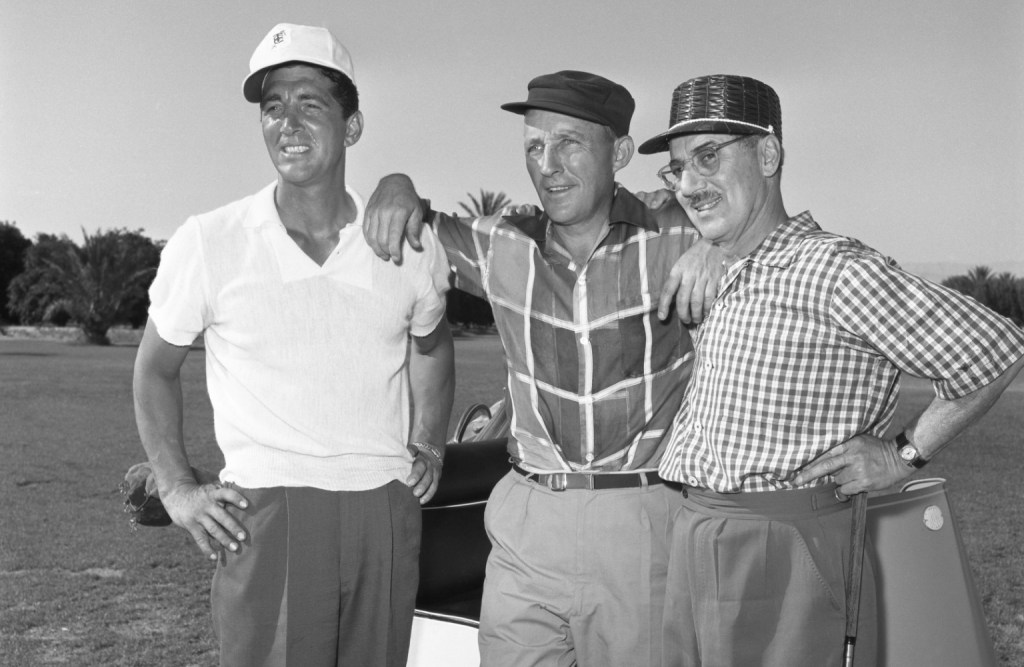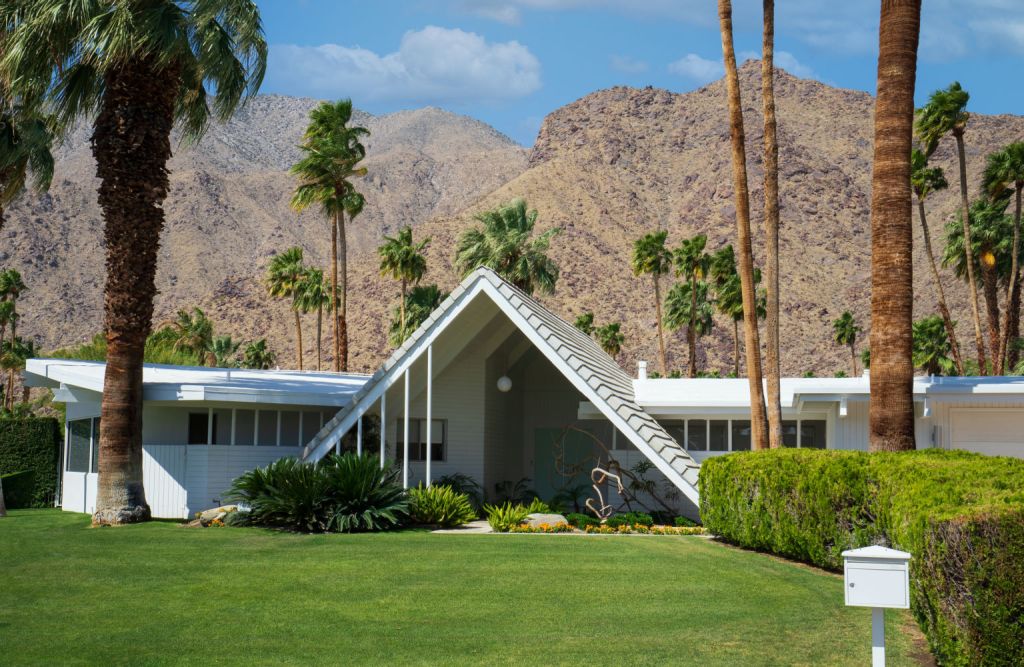California was once home to a certain vision of the American dream; Mamas & the Papas records, grinning surfers, chrome bumpers. Now LA and San Francisco are full of glass and steel and petty criminals. Escape their sketchy downtowns and you’ll find huge copy-and-paste estates of identical homes. Urban sprawl has choked off California’s charm in everywhere but Palm Springs, a desert valley city to the east of Los Angeles.
Kirk Douglas lived here, alongside Rock Hudson, Janet Gaynor and Frank Sinatra. Elvis and Priscilla Presley honeymooned in the city for the whole of 1967. Producers would often oblige their stars to remain within a two-hours drive of their LA studios. Meanwhile, paparazzi were only reimbursed for travel within 100 miles of LA. Through this accident of contract law, Palm Springs became a rare bit of shade from the Californian limelight.
This city feels anything but modern, the last outpost of a California that once was
Shade is something taken seriously here. Rows of 50-foot palm trees sway over the wide open streets, beneath the San Jacinto mountains. It’s classic west coast Americana. Shrubs and cacti hide the white-washed houses. Only their eccentric rooflines peak above the plants. Some are flat; some are sloped; a few are butterflied – inverted gables forming V-shapes.
This is mid-century modernism, conceived by the German Bauhaus movement during the Weimar Republic and adapted, with bright carpets, swimming pools and AC, for the Coachella Valley. But this city feels anything but modern, the last outpost of a California that once was.
Comedian Bob Hope, who became honorary mayor, regularly broadcasted his infatuation with the city to the nation: ‘it’s where the sun spends its winter’. Presidents sought refuge from the pressures of the Oval Office here: Eisenhower frequently golfed in Palm Springs while John F. Kennedy mingled – and apparently began his affair with Marilyn Monroe at Bing Crosby’s estate in 1962.

Housing demands quickly rose as America’s middle-class wanted their slice of this new-found desert playground. Rather than build those same downtown ghettos of LA and San Francisco, architect William Krisel instead simply built more homes that looked like those of the elites: identical floor plans, but flipped and rotated, with custom rooflines. Affordable modernism was born.
All new builds must obey a 15-foot height cap. The streets are devoid of suburban clutter; no public bins, speed bumps or streetlights. ‘Neighbours just didn’t want the darn things,’ said former mayor Frank Bogert of lampposts. Little has changed since his tenure in the 1960s. Apart from on the main Palm Canyon Drive, they’re deemed an eyesore that threatens the dark city sky.
There is a downtown of sorts. The crowds here seem to be from a different era; there’s decorum. Day drinking seems rife, but without the rowdiness. Music is played, but it doesn’t blare out onto the streets. The landmarks – a 26-foot-tall Marilyn Monroe in her signature pose and the city’s own walk of fame – aren’t tainted by pavement artists or tourist scams. I feel welcome here. In boutique stores, I’m asked how I am, not how they may help me make a purchase.

The city doesn’t tolerate obnoxious signage or lighting. Anything commercial, rotating, moving, flashing or blinking is banned. Even decibels are policed, making it an annual bummer for groups of rowdy Coachella festival-goers who stay here. A song is too loud if it can be Shazamed from the property’s gate, warns one Airbnb host.
It’s a respite from the Golden State’s grottier cities. Here, it feels like the 21st-century has been rejected. Some locals have campaigned against the big red H&M letters slapped on top of one of the clothing department’s outlets. There is consternation, too, at the Kimpton Rowan hotel, the only building to loom above the palms, standing too tall at seven-stories.
Perhaps it’s all a bit un-American, telling citizens how high they can build their homes and banning McDonald’s golden arches. But this is an America that once was, preserved by residents that love it and know its worth. I’m sure there are plenty of people in LA, just over a hundred miles away, who would kill to live in a Palm Springs bungalow.







Comments
Comments will appear under your real name unless you enter a display name in your account area. Further information can be found in our terms of use.